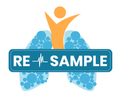On 17 January 2024, Eline te Braake, Christiane Grünloh, and Monique Tabak published a paper in the International Journal of Chronic Obstructive Pulmonary Disease. This paper was titled "Shifting Responsibilities: Developing a Pan-European Service Model for an eHealth Technology Supporting Self-Management of People with Chronic Obstructive Pulmonary Disease and Comorbidities."
You can read the full paper here.
The abstract is presented below:
Introduction
The active participation of patients in their care via self-management is an important pillar to manage chronic conditions. Self-management education and continuous support are needed to improve patients’ confidence to take such active role. One way to do this is through eHealth technologies. However, those technologies can only be successful when actively used in daily practice and when integrated in overall care. Therefore, this study investigated how a self-management eHealth technology could be implemented that emphasises the active role of patients in their care.
Methods
The service modelling method was utilized as implementation strategy. The design process consisted of five phases with salient stakeholders and consortium members of a European project to develop the service model. Studies with salient stakeholders were carried out in three different countries (Italy, Estonia, the Netherlands). A combination between face-to-face and online methods facilitated the participatory design process.
Results
Due to the pan-European context, different stakeholders in the three countries were identified. Research nurses and case managers were not yet established in practice but once implemented, expected to contribute to optimal implementation. During service modelling, a crucial step was revealed: providing self-management training before technology use to let patient familiarise with the concept of taking an active role. As HCPs felt that they were not necessarily equipped to guide patients in terms of self-management, they also should have access to such self-management training.
Conclusion
By demonstrating a way for implementation while emphasising patients’ active role, we also showed the complexity of the method in two ways. First, by demonstrating the fine line between the descriptive and prescriptive model. Thus, showcasing the need to recognize that prescriptive models may be hampered by the delay in changing work practices. Second, by highlighting the importance of identifying country-specific differences in the pan-European context, revealing that service modelling is not a one-size-fits-all approach.
More recent news
 Mon 24 Nov 2025EUHPP Live Webinar on RE-SAMPLE outcomes
Mon 24 Nov 2025EUHPP Live Webinar on RE-SAMPLE outcomes Mon 1 Sep 2025Closing Chapter: The RE-SAMPLE project ends, but legacy remains
Mon 1 Sep 2025Closing Chapter: The RE-SAMPLE project ends, but legacy remains Fri 13 Jun 2025RE-SAMPLE Project showcased at HOPE Agora 2025
Fri 13 Jun 2025RE-SAMPLE Project showcased at HOPE Agora 2025 Fri 13 Jun 2025RE-SAMPLE Project Final Consortium Meeting
Fri 13 Jun 2025RE-SAMPLE Project Final Consortium Meeting Thu 13 Mar 2025M48 Project Consortium meeting
Thu 13 Mar 2025M48 Project Consortium meeting

